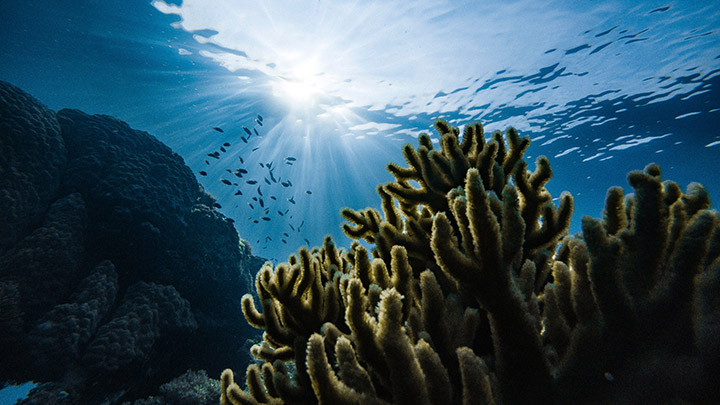Voyage into the Blue with the Ocean Observing Prize Winners

More than 80% of the ocean is unmapped, unobserved, and unexplored. To help fill these oceanographic data gaps and enable better forecasting for natural disasters, teams competing in the Powering the Blue Economy™: Ocean Observing Prize are integrating marine energy systems to help power ocean-observing platforms. This integration aims to help address power limitations and revolutionize the ability to collect the data needed to understand, map, and monitor the ocean.
When 11 teams received cash awards in the DISCOVER Competition, the first stage of the prize, we shared an in-depth look at five of the winners. Here are the remaining winners, who each received $10,000 for their top-ranked submissions.
- A team from the University of Hawaii presented the Hālona WEC Mobile Autonomous Underwater Vehicle (AUV) Docking Station. Hālona is a mobile oscillating water column wave energy converter (WEC) that provides power for oceanographic sensors and AUVs. The large subsurface profile of the WEC uses ocean currents and known background flow patterns to both propel the platform and navigate.
- Pulse of the Ocean, from Fadel Adib’s Massachusetts Institute of Technology team, is a batteryless sensor that can collect the ocean’s temperature, pressure, and pH levels. The nodes on the sensor harvest energy from underwater acoustic signals using piezoelectric-based energy harvesting—when sound hits the sensor, the pressure waves cause it to vibrate, generating electricity. By deploying a network of these nodes, the system can enable underwater navigation using minimum power.
- Brian Theobald of Northrop Grumman proposed the Mission Unlimited Unmanned Underwater Vehicle (UUV) Station, a scalable energy harvesting system that uses thermal energy gradients to enable charging and data transfer for underwater vehicles. A joint venture between Northrop Grumman and Seatrec, Mission Unlimited combines Northrop Grumman’s underwater connector technology with Seatrec’s energy harvesting technology to create a system that extends the endurance and utility of the UUV.
- From WaveVenture comes Wave Powered Oceanographic Gliders, a wave energy system that could more cost-effectively power ocean gliders and drifter buoys. To help store sufficient energy, the WaveVenture team designed a WEC that can recharge sensor batteries using wave energy. By merging gliders and ocean buoy technology, their system can navigate for longer periods, which helps collect ocean data.
- Team BlueLink designed a novel power-take-off system called Mechanical Motion Rectifier, which can convert bidirectional wave motion into unidirectional wave rotation with more than 80% conversion efficiency. The system uses a heaving point absorber WEC that can charge underwater vehicles and power wireless data communication.
- Team Navatek presented RIB WEC, a device that integrates with a rapidly installed breakwater and generates power for UUVs. This concept incorporates reinforced inflatable arms that help create a calm region for the UUV to dock safely in the water.
“Navatek strives for opportunities to use research, ideas, and engineering to change the world; and many of our engineers are enthusiastic and passionate about renewable energy,” said Patrick Montolio of team Navatek. “The Ocean Observing Prize is a wonderful opportunity for us to develop an impactful innovation in the marine energy sector.”
The DEVELOP Competition will soon follow the DISCOVER Competition and will challenge competitors to use their innovative integrations of marine energy systems and ocean observing platforms to enable better hurricane monitoring.
The U.S. Department of Energy's Water Power Technologies Office has partnered with the Integrated Ocean Observing System program at the National Oceanic and Atmospheric Administration on this prize. The National Renewable Energy Laboratory and Pacific Northwest National Laboratory are administering the prize.
Learn more about the next stage of the prize, and follow the prize for updates.
Last Updated May 28, 2025
